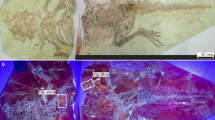Abstract
Lord and Potter have reported1 that they could not obtain preparations of Tenebrio molitor larvæ or Tribolium castaneum adults which could hydrolyse acetyleholine. This failure is surprising in view of the supposed ubiquity of cholinesterase “in conductive tissue throughout the whole animal kingdom”2, and is of importance because of its bearing on the question of the mode of action of organo-phosphorus insecticides. Since both insects are killed by low concentrations of tetraethyl pyrophosphate (TEPP), Lord and Potter's observations would indicate that the significance of its anti-cholinesterase effect is not as great as had been thought3. Although the authors stated that “no persistent attempt was made to prepare an extract hydrolysing ACh”, their work has been taken to show4 the absence of cholinesterase in these insects. In their principal preparation, the supernatant from their homogenates was treated with half its volume of ethyl alcohol. The inability of the resultant solution to hydrolyse acetylcholine is not surprising in view of the anti-cholinesterase activity of ethyl alcohol5. Furthermore, the brei was centrifuged at two stages, and the centrifugates rejected; Babers and Pratt6 have shown that, in the honey-bee, five-sixths of the cholinesterase is in the centrifugate of whole brei.
This is a preview of subscription content, access via your institution
Access options
Subscribe to this journal
Receive 51 print issues and online access
$199.00 per year
only $3.90 per issue
Buy this article
- Purchase on Springer Link
- Instant access to full article PDF
Prices may be subject to local taxes which are calculated during checkout
Similar content being viewed by others
References
Lord, K. A., and Potter, C., Nature, 166, 893 (1950); Ann. App. Biol., 38, 495 (1951).
Nachmansohn, D., “Modern Trends in Physiology and Biochemistry”, 239 (New York, 1952).
Metcalf, R. L., and March, R. B., J. Econ. Ent., 42, 721 (1949).
Hopf, A. S., Ann. App. Biol., 39, 193 (1952).
Bernheim, F., and Bernheim, M. L. C., J. Pharmacol., 57, 427 (1936). Ettinger, G. H., Brown, A. B., and Megill, A. H., J. Pharmacol., 73, 119 (1941).
Babers, F. H., and Pratt, J. J., Physiol. Zool., 24, 127 (1951).
Aldridge, W. M., Berry, W. K., and Davies, D. R., Nature, 164, 925 (1949).
Author information
Authors and Affiliations
Rights and permissions
About this article
Cite this article
O'BRIEN, R. Occurrence of Cholinesterase in Tenebrio and Tribolium. Nature 172, 162–163 (1953). https://doi.org/10.1038/172162a0
Issue Date:
DOI: https://doi.org/10.1038/172162a0
This article is cited by
-
Hydrolysis of Esters by Extracts of Insects
Nature (1953)
Comments
By submitting a comment you agree to abide by our Terms and Community Guidelines. If you find something abusive or that does not comply with our terms or guidelines please flag it as inappropriate.



